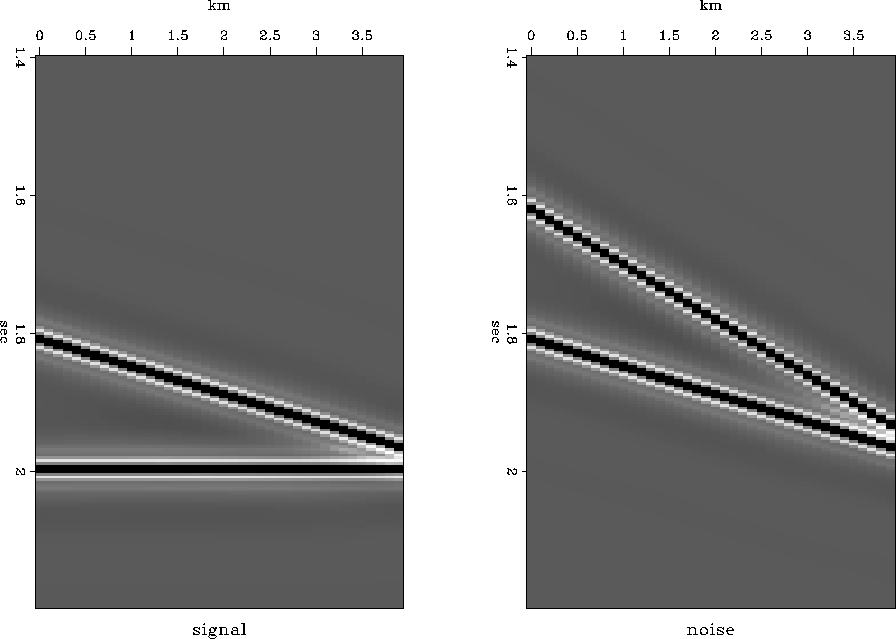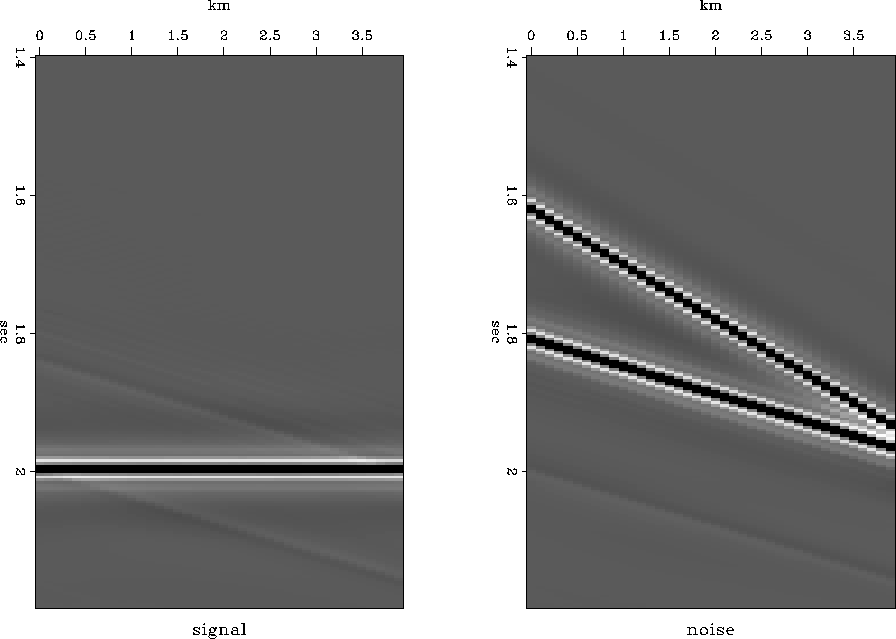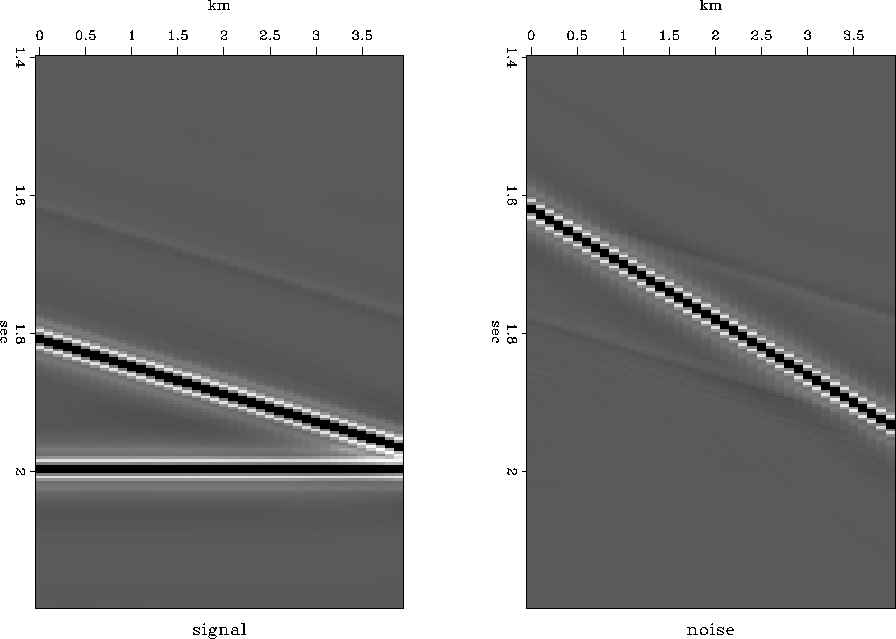




Next: Solutions with non-zero initial
Up: Synthetic examples of signal
Previous: Synthetic examples of signal
Here I offer some simple examples of the previous ideas.
Figure ![[*]](http://sepwww.stanford.edu/latex2html/cross_ref_motif.gif) shows two sections.
The first section, which represents the signal,
has a signal filter
shows two sections.
The first section, which represents the signal,
has a signal filter  calculated from it.
The second section, which represents the noise,
has a noise filter
calculated from it.
The second section, which represents the noise,
has a noise filter  calculated from it.
Notice that the signal and noise sections contain a common event of
intermediate dip.
The data consists of all three events
and is shown in Figure
calculated from it.
Notice that the signal and noise sections contain a common event of
intermediate dip.
The data consists of all three events
and is shown in Figure ![[*]](http://sepwww.stanford.edu/latex2html/cross_ref_motif.gif) .
Figure
.
Figure ![[*]](http://sepwww.stanford.edu/latex2html/cross_ref_motif.gif) shows the result of calculating the signal
using the system of regressions seen in equation (
shows the result of calculating the signal
using the system of regressions seen in equation (![[*]](http://sepwww.stanford.edu/latex2html/cross_ref_motif.gif) ).
Notice the event common to both the signal and noise
does not appear in the calculated signal. Since the noise is
just the signal subtracted from the noise, the common event appears
in the noise section.
).
Notice the event common to both the signal and noise
does not appear in the calculated signal. Since the noise is
just the signal subtracted from the noise, the common event appears
in the noise section.
signalnoise
Figure 1
The events on the left are defined as signal,
the events on the right are defined as noise.
|
|  |





data
Figure 2
The data, made up of both signal and noise.
|
|  |





separ7sa
Figure 3
The calculated signal and noise using an initial solution of zero for the
signal.
|
|  |





When noise is calculated with the system of regressions seen in
equation (![[*]](http://sepwww.stanford.edu/latex2html/cross_ref_motif.gif) ),
the event common to both the definition of noise and signal does not
appear in the calculated noise,
but is seen in the signal, which is now the noise subtracted from the data.
),
the event common to both the definition of noise and signal does not
appear in the calculated noise,
but is seen in the signal, which is now the noise subtracted from the data.
separ7na
Figure 4
The calculated signal and noise using an initial solution of zero for the
noise.
|
|  |










Next: Solutions with non-zero initial
Up: Synthetic examples of signal
Previous: Synthetic examples of signal
Stanford Exploration Project
2/9/2001
![[*]](http://sepwww.stanford.edu/latex2html/cross_ref_motif.gif) shows two sections.
The first section, which represents the signal,
has a signal filter
shows two sections.
The first section, which represents the signal,
has a signal filter ![[*]](http://sepwww.stanford.edu/latex2html/cross_ref_motif.gif) .
Figure
.
Figure ![[*]](http://sepwww.stanford.edu/latex2html/cross_ref_motif.gif) shows the result of calculating the signal
using the system of regressions seen in equation (
shows the result of calculating the signal
using the system of regressions seen in equation (![[*]](http://sepwww.stanford.edu/latex2html/cross_ref_motif.gif) ).
Notice the event common to both the signal and noise
does not appear in the calculated signal. Since the noise is
just the signal subtracted from the noise, the common event appears
in the noise section.
).
Notice the event common to both the signal and noise
does not appear in the calculated signal. Since the noise is
just the signal subtracted from the noise, the common event appears
in the noise section.



